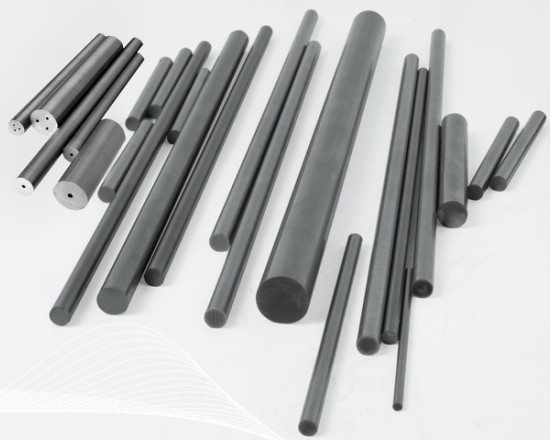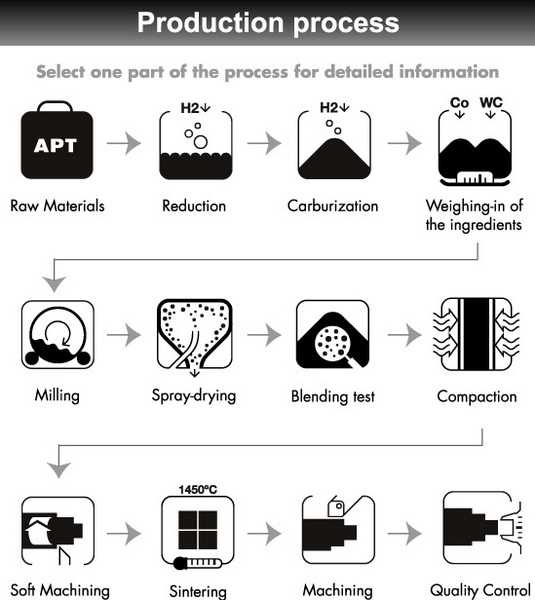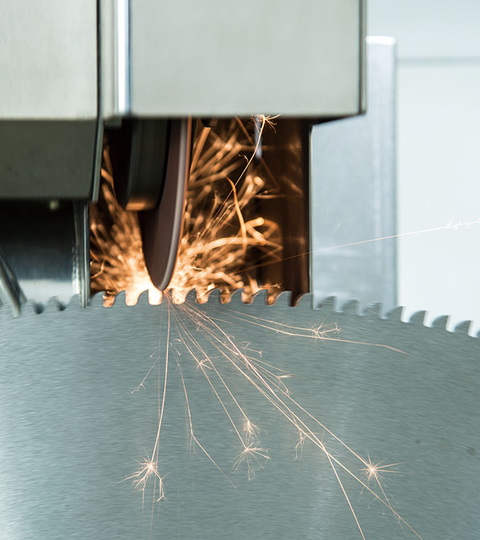Content Menu
● Introduction to Tungsten Carbide
● Chemical and Metal Composition
>> Core Components
>> Binder Metals
>> Other Elements
● Structure and Crystalline Forms
● Manufacturing Process
● Physical and Mechanical Properties
● Industrial Applications
● Microstructure and Grain Size
● Environmental and Health Considerations
● Advanced Manufacturing Techniques and Innovations
● Historical Background and Development
● Comparative Analysis: Tungsten Carbide vs. Other Hard Materials
● Economic and Market Considerations
● Environmental Impact and Sustainability
● Future Trends and Research Directions
● Tungsten Carbide in Everyday Life
● Case Studies: Real-World Applications
● Conclusion
● Frequently Asked Questions (FAQs)
>> 1. What metals are present in tungsten carbide?
>> 2. Is tungsten carbide an alloy or a compound?
>> 3. Why is cobalt used as a binder in tungsten carbide?
>> 4. What are the main industrial uses of tungsten carbide?
>> 5. Is tungsten carbide recyclable?
Tungsten carbide is one of the most remarkable materials in modern engineering and manufacturing, prized for its extraordinary hardness, wear resistance, and versatility. This article delves into the composition of tungsten carbide, the metals involved in its structure, the manufacturing process, and its wide-ranging applications. We will also address common questions and provide a comprehensive conclusion.

Introduction to Tungsten Carbide
Tungsten carbide, often simply called "carbide" in industrial contexts, is a chemical compound with the formula WC. It consists of equal parts tungsten (W) and carbon (C) atoms, forming a material that is renowned for its hardness and durability. While pure tungsten carbide is extremely hard, it is also brittle. To enhance its toughness and utility in practical applications, it is typically combined with other metals—most notably cobalt—to form what is known as cemented carbide.
Chemical and Metal Composition
Core Components
- Tungsten (W): The primary metal in tungsten carbide, tungsten is known for its high melting point and density. In tungsten carbide, it forms strong covalent bonds with carbon atoms, contributing to the material's exceptional hardness.
- Carbon (C): Carbon atoms bond with tungsten to create a rigid, crystalline structure. The stoichiometric ratio is typically 1:1, meaning one tungsten atom for each carbon atom.
Binder Metals
While tungsten carbide itself is a compound, the industrial material known as cemented carbide includes additional metals as binders:
- Cobalt (Co): The most common binder, cobalt is added to improve toughness and reduce brittleness. The percentage of cobalt can range from 3% to 20% by weight, depending on the desired balance between hardness and toughness.
- Nickel (Ni): Sometimes used as an alternative or supplement to cobalt, nickel can improve corrosion resistance, especially in environments where cobalt might be less suitable.
- Iron (Fe): Occasionally used in small amounts, iron is less common but can be found in some specialized grades.
Other Elements
In certain formulations, trace amounts of other metals such as titanium (Ti), chromium (Cr), or vanadium (V) may be added to enhance specific properties like wear resistance or corrosion resistance.
Structure and Crystalline Forms
Tungsten carbide exists in two primary crystalline forms:
- Hexagonal (α-WC): The most common and stable form at room temperature. It features layers of tungsten atoms with carbon atoms occupying half the interstitial sites.
- Cubic (β-WC): A high-temperature form with a rock-salt structure, less commonly encountered in industrial applications.
The strong covalent bonds between tungsten and carbon atoms give the material exceptional hardness, comparable to that of diamond, and a high degree of stiffness and density.
Manufacturing Process
The production of cemented tungsten carbide is a multi-step process that combines advanced chemistry with precision engineering:
1. Ore Extraction: The process begins with the extraction of tungsten ore, such as scheelite (CaWO₄) or wolframite ((Fe,Mn)WO₄).
2. Refining: The ore is crushed, treated with chemicals, and refined into ammonium paratungstate (APT), a purified intermediate.
3. Oxide Production: APT is calcined at high temperatures to produce tungsten oxide (WO₃).
4. Reduction: Tungsten oxide is reduced in a hydrogen atmosphere to obtain pure tungsten metal powder.
5. Carburization: The tungsten powder is mixed with a carbon source and heated to form tungsten carbide (WC) powder.
6. Milling: The resulting powder is milled to achieve the desired particle size and uniformity.
7. Blending with Binder: The powder is mixed with a metallic binder (usually cobalt) to enhance toughness and facilitate sintering.
8. Pressing: The blended powder is pressed into the desired shapes using hydraulic or mechanical molds.
9. Sintering: The pressed shapes are heated in a sintering furnace. The binder melts and flows around the tungsten carbide grains, cementing them together into a dense, solid mass.
10. Machining and Grinding: The sintered parts are machined and ground to precise dimensions and surface finishes.
11. Optional Coatings: Some components receive additional coatings, such as titanium nitride (TiN), to further enhance wear resistance.

Physical and Mechanical Properties
Tungsten carbide is renowned for its unique combination of properties:
- Hardness: Ranks 9–9.5 on the Mohs scale, just below diamond.
- Density: Approximately 15.6 g/cm³, much denser than steel (7.8 g/cm³).
- Melting Point: Around 2,870°C, allowing it to withstand extreme temperatures.
- Young's Modulus: 530–700 GPa, indicating high stiffness (three times that of steel).
- Thermal Expansion: Low coefficient of thermal expansion (5.5 µm/m·K), reducing deformation under heat.
- Wear Resistance: Exceptional resistance to abrasion and deformation, even under high-stress conditions.
- Corrosion Resistance: Stable in most environments, though susceptible to attack by strong acids like hydrofluoric acid.
- Thermal Conductivity: Efficient at dissipating heat (110 W/m·K), ideal for high-speed machining.
Industrial Applications
Tungsten carbide is used in a wide variety of industrial applications due to its exceptional properties:
- Cutting Tools: Used in machining, drilling, and milling due to its hardness and wear resistance.
- Mining and Construction: Used in rock drilling tools, road construction, and tunnel boring.
- Wear Parts: Used in nozzles, sealing rings, knives, and cutting edges.
- Jewelry: Used in rings and other jewelry due to its scratch resistance and durability.
- Armor-Piercing Bullets: Used in military applications for its density and hardness.
- Drawing Dies and Matrices: Used in non-cutting processes for shaping metals and other materials.
Microstructure and Grain Size
The microstructure of cemented tungsten carbide is critical to its performance:
- WC Grains: The size and distribution of tungsten carbide grains can be tailored for specific applications. Submicron grains (0.2–0.8 µm) are used for fine machining, while coarse grains (2–5 µm) are used for rock drilling.
- Binder Distribution: The binder metal (usually cobalt) is distributed around the WC grains, providing toughness and reducing brittleness.
- Grain Boundaries: The interface between WC grains and the binder is carefully controlled to optimize strength and durability.
Environmental and Health Considerations
Tungsten carbide is generally considered safe in its solid form, but precautions are necessary during manufacturing:
- Dust Inhalation: Inhalation of fine tungsten carbide powder can pose health risks, so proper ventilation and protective equipment are essential.
- Recycling: Tungsten carbide is recyclable, and scrap material can be reclaimed and reused, reducing waste and conserving resources.
Advanced Manufacturing Techniques and Innovations
Recent advancements in manufacturing have further enhanced the capabilities of tungsten carbide:
- Nanostructured Carbides: Development of nanostructured tungsten carbide materials has led to even greater hardness and wear resistance, opening new possibilities in precision engineering and micro-machining.
- Additive Manufacturing: 3D printing techniques are being adapted for tungsten carbide, allowing for complex geometries and customized tooling that were previously impossible to achieve.
- Surface Engineering: Advanced coatings and surface treatments, such as diamond-like carbon (DLC) or advanced ceramic layers, are being applied to further extend the lifespan and performance of tungsten carbide tools.
- Hybrid Materials: Combining tungsten carbide with other ceramics or metals in composite materials is enabling new applications in aerospace, defense, and medical industries.
Historical Background and Development
The history of tungsten carbide is intertwined with the development of modern industry:
- Early Discoveries: Tungsten was identified in the 18th century, but it wasn't until the late 19th and early 20th centuries that its carbide form was synthesized and recognized for its unique properties.
- Industrial Adoption: The first commercial applications of tungsten carbide emerged in the 1920s, primarily in cutting tools for machining steel and other hard materials.
- World War II: The material saw significant use in armor-piercing projectiles and other military applications, driving further research and development.
- Post-War Expansion: The post-war period saw rapid growth in the use of tungsten carbide in mining, construction, and manufacturing, as well as the development of new grades and formulations.
Comparative Analysis: Tungsten Carbide vs. Other Hard Materials
A comparison with other hard materials highlights the unique advantages of tungsten carbide:
| Material | Hardness (Mohs) | Density (g/cm³) | Melting Point (°C) | Key Applications |
| Tungsten Carbide | 9–9.5 | 15.6 | 2,870 | Cutting tools, mining |
| Diamond | 10 | 3.5 | 3,550 (sublimes) | Cutting, drilling, jewelry |
| Cubic Boron Nitride | 9.5 | 3.45 | 2,730 | Cutting, grinding |
| Silicon Carbide | 9.2 | 3.21 | 2,730 | Abrasives, electronics |
| Boron Carbide | 9.3 | 2.52 | 2,350 | Armor, abrasives |
This table illustrates that while diamond is harder, tungsten carbide offers a superior combination of hardness, density, and toughness, making it the material of choice for many industrial applications.
Economic and Market Considerations
The global market for tungsten carbide is substantial and continues to grow:
- Market Size: The global tungsten carbide market is valued in the billions of dollars, driven by demand from manufacturing, mining, and construction sectors.
- Supply Chain: China is the largest producer of tungsten, but significant reserves and production also exist in Russia, Canada, and South America.
- Price Factors: The cost of tungsten carbide is influenced by raw material prices, manufacturing complexity, and the specific grade required for each application.
- Recycling Impact: The ability to recycle tungsten carbide scrap is a significant factor in the economics of the industry, helping to stabilize prices and reduce environmental impact.
Environmental Impact and Sustainability
While tungsten carbide is highly valued for its performance, its production and use have environmental implications:
- Mining Impacts: Extraction of tungsten ore can have significant environmental effects, including habitat disruption and water pollution.
- Energy Consumption: The manufacturing process is energy-intensive, particularly the high-temperature sintering step.
- Waste Management: Proper handling and recycling of tungsten carbide scrap are essential to minimize waste and reduce the need for new raw materials.
- Regulatory Compliance: Manufacturers must adhere to environmental regulations regarding emissions, waste disposal, and worker safety.
Future Trends and Research Directions
Ongoing research and development are expanding the frontiers of tungsten carbide technology:
- Smart Materials: Integration of sensors and smart coatings into tungsten carbide tools for real-time monitoring and predictive maintenance.
- Green Manufacturing: Development of more energy-efficient and environmentally friendly production processes.
- Biomedical Applications: Exploration of tungsten carbide in medical devices, such as surgical instruments and implants, where its biocompatibility and wear resistance are advantageous.
- Space Exploration: Potential use of tungsten carbide in components for spacecraft and planetary exploration, where extreme conditions require robust materials.
Tungsten Carbide in Everyday Life
Beyond industrial and military uses, tungsten carbide has found its way into consumer products:
- Jewelry: Tungsten carbide rings are popular for their scratch resistance and modern appearance.
- Sports Equipment: Used in the tips of golf clubs and other sporting goods for durability.
- Consumer Electronics: Small tungsten carbide components are used in precision parts for electronics manufacturing.
- Household Tools: High-end knives and cutting tools often feature tungsten carbide blades or inserts.
Case Studies: Real-World Applications
To illustrate the versatility of tungsten carbide, consider the following examples:
- Mining Drills: Tungsten carbide-tipped drill bits are standard in the mining industry, where they withstand the abrasive forces of rock drilling.
- Metalworking Tools: End mills, inserts, and drills made from tungsten carbide enable high-speed, high-precision machining of metals.
- Oil and Gas Exploration: Tungsten carbide components are used in downhole drilling tools, where they endure extreme pressure and abrasion.
- Medical Devices: Tungsten carbide is used in surgical instruments and dental tools for its sharpness and longevity.
Conclusion
Tungsten carbide is a unique and versatile material that combines the hardness of tungsten and carbon with the toughness of binder metals like cobalt and nickel. Its exceptional properties make it indispensable in a wide range of industrial applications, from cutting tools and mining equipment to jewelry and military hardware. The careful control of composition, microstructure, and manufacturing processes ensures that tungsten carbide products meet the demanding requirements of modern engineering and manufacturing. Ongoing advancements in technology and material science promise to further expand the role of tungsten carbide in the future.

Frequently Asked Questions (FAQs)
1. What metals are present in tungsten carbide?
Tungsten carbide itself is a compound of tungsten and carbon (WC). In industrial applications, it is typically combined with a binder metal, most commonly cobalt, and sometimes nickel or iron. These metals are added to improve toughness and reduce brittleness.
2. Is tungsten carbide an alloy or a compound?
Tungsten carbide is a chemical compound, not an alloy. An alloy is a mixture of metals, while a compound is a substance formed by chemically bonded atoms of different elements. Tungsten carbide consists of tungsten and carbon atoms chemically bonded together.
3. Why is cobalt used as a binder in tungsten carbide?
Cobalt is used as a binder because it improves the toughness and shock resistance of tungsten carbide, making it less brittle and more suitable for industrial applications. The amount of cobalt can be adjusted to achieve the desired balance between hardness and toughness.
4. What are the main industrial uses of tungsten carbide?
Tungsten carbide is widely used in cutting tools, drilling and mining equipment, wear parts (such as nozzles and sealing rings), drawing dies, jewelry, and armor-piercing bullets. Its exceptional hardness and wear resistance make it ideal for demanding applications.
5. Is tungsten carbide recyclable?
Yes, tungsten carbide is recyclable. Scrap material and worn-out tools can be reclaimed and reused, reducing waste and conserving resources.
















